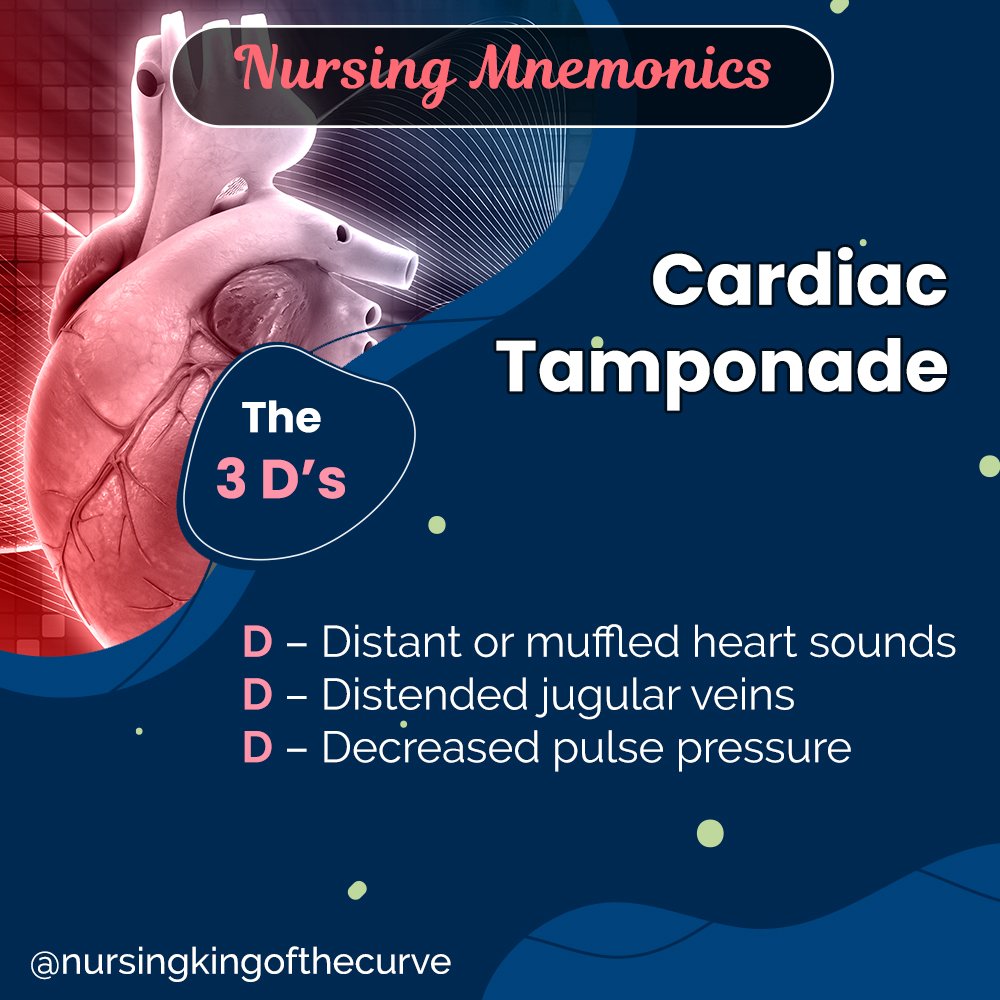Nursing Mnemonics: Understanding Cardiac Tamponade with the 3 D's
For nursing students and professionals preparing for the NCLEX, mastering key medical concepts can often feel overwhelming. Mnemonics, however, are invaluable tools for simplifying complex conditions and improving recall. Today, we'll delve into one of the most critical cardiac emergencies: Cardiac Tamponade, and break it down using the 3 D's mnemonic to help you remember its hallmark clinical signs.
What is Cardiac Tamponade?
Cardiac Tamponade is a medical emergency where fluid accumulates in the pericardial sac surrounding the heart. This buildup compresses the heart, preventing it from filling and pumping effectively. If untreated, it can lead to cardiovascular collapse and death. Recognizing its signs and symptoms promptly is crucial for initiating life-saving interventions.
The 3 D's of Cardiac Tamponade
The mnemonic 3 D's makes it easier to recall the classic triad of symptoms associated with Cardiac Tamponade:
Distant (or muffled) heart sounds
Due to the fluid in the pericardial sac, heart sounds become distant or muffled upon auscultation. This finding is a hallmark clue and should prompt further assessment.
Distended jugular veins
The increased pressure in the pericardium causes impaired venous return, leading to visible jugular vein distension (JVD). This sign is particularly evident when the patient is in a semi-reclined position.
Decreased pulse pressure
Pulse pressure is the difference between systolic and diastolic blood pressure. In Cardiac Tamponade, this narrows significantly due to reduced stroke volume. You may also observe hypotension, a late sign of cardiac compromise.
Why These Signs Matter
The 3 D's are part of Beck’s Triad, which is a classic but incomplete diagnostic triad for Cardiac Tamponade. While not every patient presents with all three signs, recognizing one or more should immediately raise suspicion and prompt further diagnostic evaluation, such as:
Echocardiography: The gold standard for diagnosing pericardial effusion and Tamponade.
Chest X-ray: May show an enlarged cardiac silhouette (water bottle sign).
ECG: Could indicate low voltage QRS complexes or electrical alternans.
Common Causes of Cardiac Tamponade
While preparing for the NCLEX or real-world practice, remember these common causes of Cardiac Tamponade:
Trauma: Penetrating or blunt chest injuries.
Pericarditis: Inflammation of the pericardium.
Post-surgical complications: Particularly after cardiac surgery.
Malignancies: Tumors spreading to the pericardium.
Uremia: A complication of severe kidney disease.
Nursing Implications: What Should You Do?
If you suspect Cardiac Tamponade in a patient, follow these steps:
Immediate notification: Alert the healthcare provider or rapid response team.
Prepare for Pericardiocentesis: This is the definitive treatment where a needle is inserted into the pericardium to drain excess fluid.
Administer supportive care: Provide oxygen, monitor vital signs, and establish IV access for fluid resuscitation or medications.
Key Takeaways:
Use the 3 D's mnemonic to quickly identify the clinical signs of Cardiac Tamponade: Distant heart sounds, Distended jugular veins, and Decreased pulse pressure.
Time is critical. Prompt recognition and intervention can save lives.
Reinforce your learning with practice questions to prepare for high-stakes exams like the NCLEX.
The King of the Curve platform offers resources to help you master challenging topics like this one. Visit our app or web platform to enhance your preparation and stay ahead of the curve!
Download the “NCLEX King of the Curve” App: App Store | Google Play
Visit the King of the Curve Web App: https://kingofthecurve.org/
Bookmark this post for your study sessions and share it with fellow nursing students. Together, let’s ace the NCLEX and deliver exceptional patient care!
For more nursing mnemonics and study tips, follow NCLEX King of the Curve!

